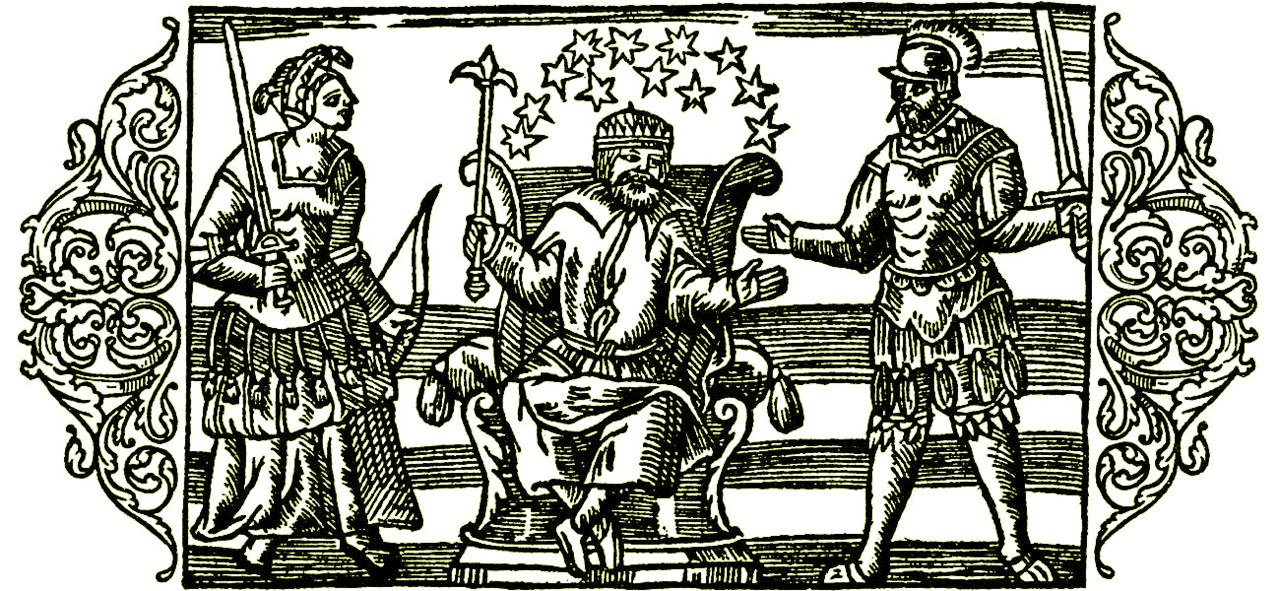The First ‘Viking’ Was A Bronze Age Man
Ellen Lloyd - AncientPages.com - The Vikings were feared, hated, and admired, and their rich history goes far back in time. Vikings changed the history of Europe, and their presence left a legacy in other parts of the world. How could they become so powerful and rich? How were they able to explore distant lands?
Credit: Stock Photo
We tend to associate Vikings with great names such as Ragnar Lodbrok, Ivar the Boneless, Erik the Red, and mighty King Harald Hardrada, just to mention a few. However, before these men became famous and influential, there was the Bronze Age that shaped the Nordic civilization and laid the foundation for the Viking Age.
Historical Studies Show The First Viking Was A Bronze Age Man
The Bronze Age was a fascinating period in Scandinavia and other parts of Europe. During this period, Norse people traded with foreign cultures and sailed to unknown lands. Influential leaders held a high status in society, and pagan gods who many believed controlled the fate of humanity were worshipped.
Around 1,600 B.C., people in northern countries quickly acquired a prominent place in Europe thanks to their trade with copper, the first metal used by ancient man more than 10,000 years ago.
Nordic people traveled all the way to the Alps and Germany to acquire copper that they transported to England in exchange for other precious metals they could bring back to their countries.
Norse deities played a vital role in society. To the left Frigg with sword and bow. In the middle Tor (Thor) with crown and spire sitting on a throne. To the right Oden (Odin) heavily armed. All these deities are encountered in Norse mythology. Credit: Public Domain
The business was booming and valuable trade contacts were established. The Norwegians played a central role in this continental trade and Jutland, a large peninsula containing Denmark's mainland regions, became the richest place in Europe. This sensational economic transformation occurred almost overnight because of trading with amber.
“I don't think the raw materials came to the Nordic countries step by step, it had become too expensive. The Norwegians must have gone a long way to get the copper, some from Central Europe, some from Spain. There are rock carvings in Portugal that are very similar to the Scandivaioan ones,” says Professor Johan Ling, at the Department of Historical Studies at the University of Gothenburg, who surveyed tens of thousands of Swedish carvings.
Trade And Colonization During The Bronze Age
The highly respected Nordic culture was undoubtedly founded on trade, but proper agriculture was also very important.
During this period, Norse people realized that investing in merchant's vessels, owning lands, trading, and looting could make them rich. This is how the Viking Age started, a period characterized by trade and colonization.
However, being a farmer could be difficult if a person doesn’t have enough land and livestock.
According to Professor Kristian Kristiansen at the Department of Historical Studies at the University of Gothenburg, Norse people created a “patrilineal society that the Indo-Europeans brought with them into Europe, where the eldest son inherits the farm. It is deeply embedded in Indo-European society and created a strong social dynamic. They also came up with a new shepherd and warrior culture, where there was the prestige of having a large herd of livestock.”
Kristiansen explained that “expansion of agriculture required unrestricted labor. If you didn't have much land, you couldn't afford to put fighters on boats. To manage agriculture and build boats for 20 people, 100 people were needed annually. This was probably not possible without slaves. During the Viking era, the vessels were considerably larger, and the need for labor increased to perhaps 250 people.”
Professor Ling explained that those who didn’t inherit large land areas gained power and wealth by becoming great warriors instead.
Boys were trained as warriors and were later sent to serve someone. In ancient times, the gender roles for boys and girls were quite defined. It was most common that boys worked on farms and girls to do housework.
Viking children at the age of 10 were considered adults and were required to learn the jobs and tasks that their parents did. The boys mainly worked on farms, and the girls worked inside like their mothers.
Viking boys were expected to learn how to take care of themselves. This meant they must be not only good farmers but also skilled warriors.
“It is a system created in the Bronze Age, where the men on the boats formed a war chest. This meant that there were basically two ways of gaining wealth: of land or of commerce and looting.
Many women came from outside, according to analyzes of remains in, among other things, Danish graves. The DNA and strontium analyses do not reveal where, only that they came from other regions. Boys were sent as foster children to an uncle's family, where they grew up with cousins and were trained in a continental network of warriors.
Gifts such as gold rings, positions of power, and women are important for alliances. It is important to be famous and remembered. The exchange of gifts is central even during the Viking era, as is evident in the Havamal life rules, but the system is formed in the Bronze Age. You see it on the rock carvings, which depict an exclusive elite with travel, hunting, and ritual matches,” Professor Ling explained.
During the Viking era, there were different classes of ships. The longships were mainly used as warships and the ships called Knarrs (or knorrs in Old Norse) served as slower passenger and cargo ships. Credit: Viking Armada by Edward Moran (1829-1901) Public Domain
One of the main reasons behind the Vikings' success in reaching distant lands lies in their remarkable longships. The Vikings’ ships were the European Dark Ages' greatest technical and artistic achievement. Without these great ships, the Viking Age would never have happened.
In a study conducted together with Professor Kristiansen and American archaeologist Timothy Earle, Professor Ling drew a comprehensive picture of the Nordic Bronze Age economy, social structures, and war ideology. The results of the study showed ships gave Norwegians power and wealth. Constructions of long-distance boats continued and played a vital role in the Vikings’ success abroad.
First version of this article was published on November 18, 2019
Written by - Ellen Lloyd – AncientPages.com
Copyright © AncientPages.com All rights reserved. This material may not be published, broadcast, rewritten or redistributed in whole or part without the express written permission of AncientPages.com
Expand for referencesMore From Ancient Pages
-
 Strange Ancient Accounts Of Fourth Dimensional Phenomena
Ancient Mysteries | Jun 7, 2018
Strange Ancient Accounts Of Fourth Dimensional Phenomena
Ancient Mysteries | Jun 7, 2018 -
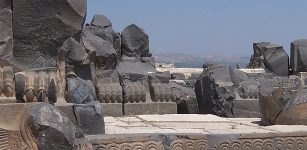 Unsolved Mystery Of The Giant Footprints Outside The Ain Dara Temple
Featured Stories | Jun 7, 2014
Unsolved Mystery Of The Giant Footprints Outside The Ain Dara Temple
Featured Stories | Jun 7, 2014 -
 “Hittite Forest” That Grew 4,500 Years Ago Will Be Created In Alacahöyük, Turkey
Archaeology | Dec 21, 2015
“Hittite Forest” That Grew 4,500 Years Ago Will Be Created In Alacahöyük, Turkey
Archaeology | Dec 21, 2015 -
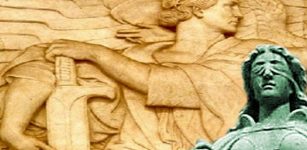 Lady Justice (Justitia): Legal And Philosophical Concept Produced In Remote Antiquity
Featured Stories | Nov 7, 2019
Lady Justice (Justitia): Legal And Philosophical Concept Produced In Remote Antiquity
Featured Stories | Nov 7, 2019 -
 Cursed Dwarf Fafnir Turned Into A Fearsome Norse Dragon And Guarded The Stolen Magical Ring Andvaranaut
Featured Stories | Aug 16, 2017
Cursed Dwarf Fafnir Turned Into A Fearsome Norse Dragon And Guarded The Stolen Magical Ring Andvaranaut
Featured Stories | Aug 16, 2017 -
 Fascinating Altamura Man – One Of The Most Complete Neanderthal Skeletons Ever Discovered
Featured Stories | Jul 15, 2022
Fascinating Altamura Man – One Of The Most Complete Neanderthal Skeletons Ever Discovered
Featured Stories | Jul 15, 2022 -
 Is There A Hidden Ancient Message Inside San Miniato Al Monte Basilica?
Featured Stories | Oct 3, 2022
Is There A Hidden Ancient Message Inside San Miniato Al Monte Basilica?
Featured Stories | Oct 3, 2022 -
 Secrets Of Mica Chambers Of Teotihuacan
Ancient Technology | Jun 12, 2020
Secrets Of Mica Chambers Of Teotihuacan
Ancient Technology | Jun 12, 2020 -
 Strange Reports Of A Mysterious Stone-Throwing Phenomenon And Invisible Entity Encountered Worldwide
Featured Stories | Dec 4, 2023
Strange Reports Of A Mysterious Stone-Throwing Phenomenon And Invisible Entity Encountered Worldwide
Featured Stories | Dec 4, 2023 -
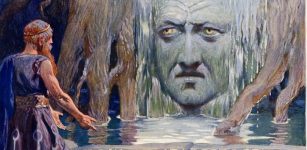 Well Of Urd (Urdarbrunn): Abode Of Fate Goddesses And Powerful Symbol In Norse Beliefs
Featured Stories | Dec 17, 2022
Well Of Urd (Urdarbrunn): Abode Of Fate Goddesses And Powerful Symbol In Norse Beliefs
Featured Stories | Dec 17, 2022 -
 Thousands Of Petroglyphs And Inscriptions In Wadi Rum, Jordan – 12,000 Years Of Human Occupation
Civilizations | Oct 23, 2018
Thousands Of Petroglyphs And Inscriptions In Wadi Rum, Jordan – 12,000 Years Of Human Occupation
Civilizations | Oct 23, 2018 -
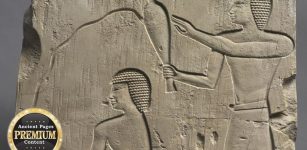 Daily Life Of Priests And Priestesses In Ancient Egypt
Ancient History Facts | Apr 5, 2018
Daily Life Of Priests And Priestesses In Ancient Egypt
Ancient History Facts | Apr 5, 2018 -
 Beautiful Ancient City Of Polonnaruwa With Hundred Of Tombs, Temples And Statues
Civilizations | Nov 12, 2018
Beautiful Ancient City Of Polonnaruwa With Hundred Of Tombs, Temples And Statues
Civilizations | Nov 12, 2018 -
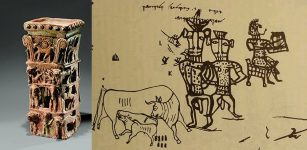 Ancient ‘Yahweh And His Asherah’ Inscriptions At Kuntillet ‘Ajrud Remain An Unsolved Biblical Mystery
Biblical Mysteries | Feb 12, 2021
Ancient ‘Yahweh And His Asherah’ Inscriptions At Kuntillet ‘Ajrud Remain An Unsolved Biblical Mystery
Biblical Mysteries | Feb 12, 2021 -
 Evidence Of Early Metalworking In Arctic Canada – European Technologies Involved
Archaeology | Dec 7, 2014
Evidence Of Early Metalworking In Arctic Canada – European Technologies Involved
Archaeology | Dec 7, 2014 -
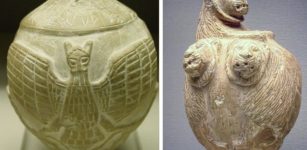 ‘Stone Club Head Of Mesilim’ Probably The Most Powerful Sumerian Ruler At That Time
Artifacts | Oct 12, 2017
‘Stone Club Head Of Mesilim’ Probably The Most Powerful Sumerian Ruler At That Time
Artifacts | Oct 12, 2017 -
 Belenus: Mighty Gaulish God Of Light Often Associated With Lugh And Apollo
Celtic Mythology | Feb 6, 2020
Belenus: Mighty Gaulish God Of Light Often Associated With Lugh And Apollo
Celtic Mythology | Feb 6, 2020 -
 Ancient Knowledge Of Levitation And Antigravity
Ancient Mysteries | Jan 24, 2016
Ancient Knowledge Of Levitation And Antigravity
Ancient Mysteries | Jan 24, 2016 -
 Delphic Mysteries – Extraordinary Encounter At An Ancient Temple – Part 2
Ancient Mysteries | Apr 3, 2023
Delphic Mysteries – Extraordinary Encounter At An Ancient Temple – Part 2
Ancient Mysteries | Apr 3, 2023 -
 Antediluvian Discoveries In Britain, Germany And France That Could Re-Write History
Ancient Mysteries | Jan 4, 2019
Antediluvian Discoveries In Britain, Germany And France That Could Re-Write History
Ancient Mysteries | Jan 4, 2019


